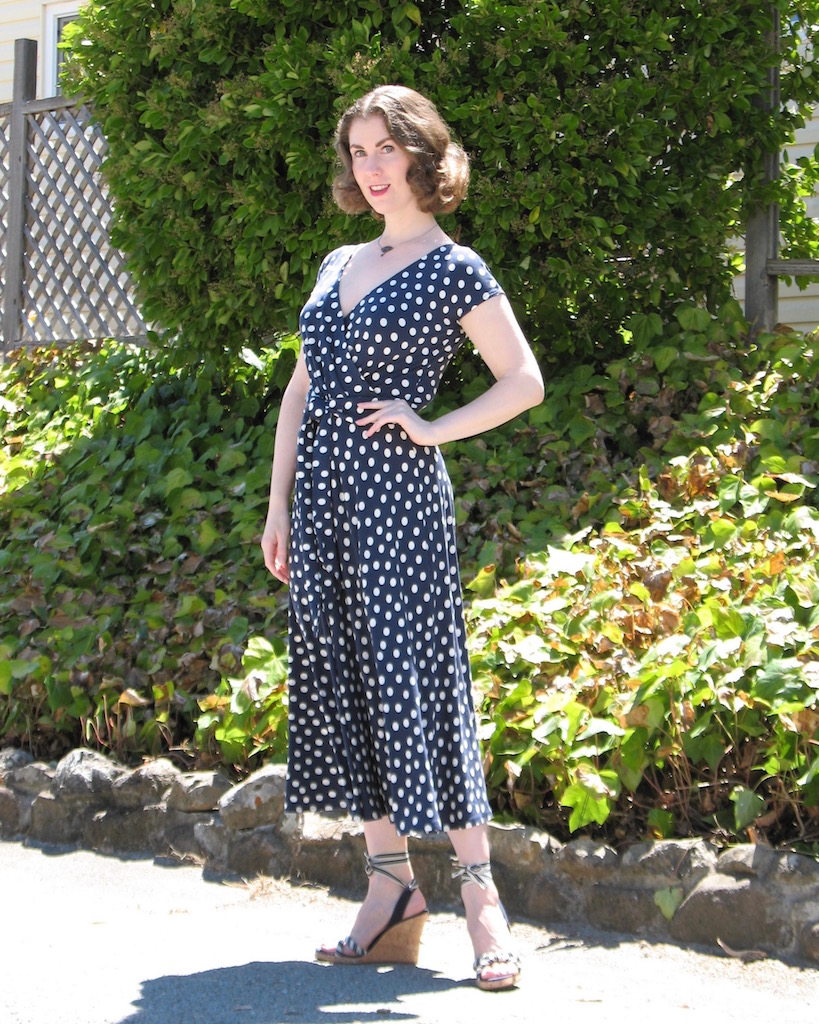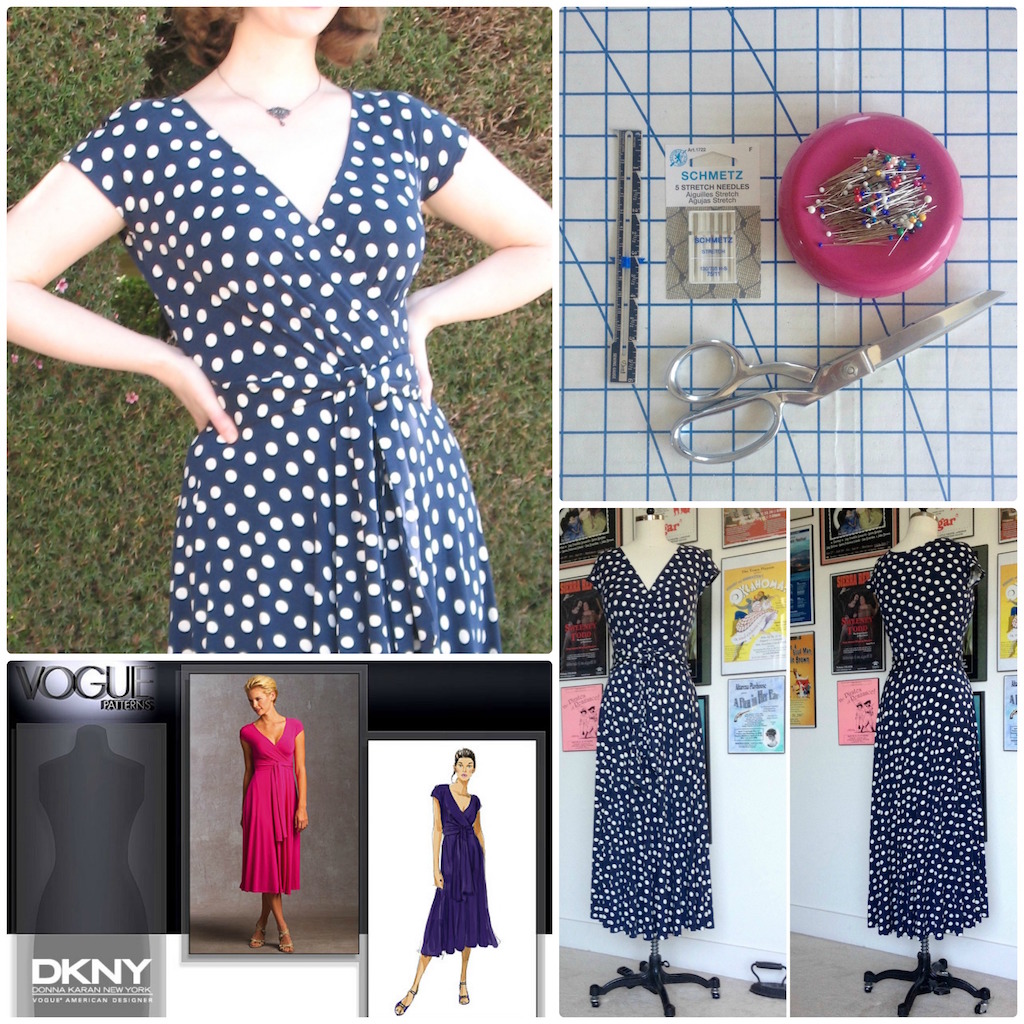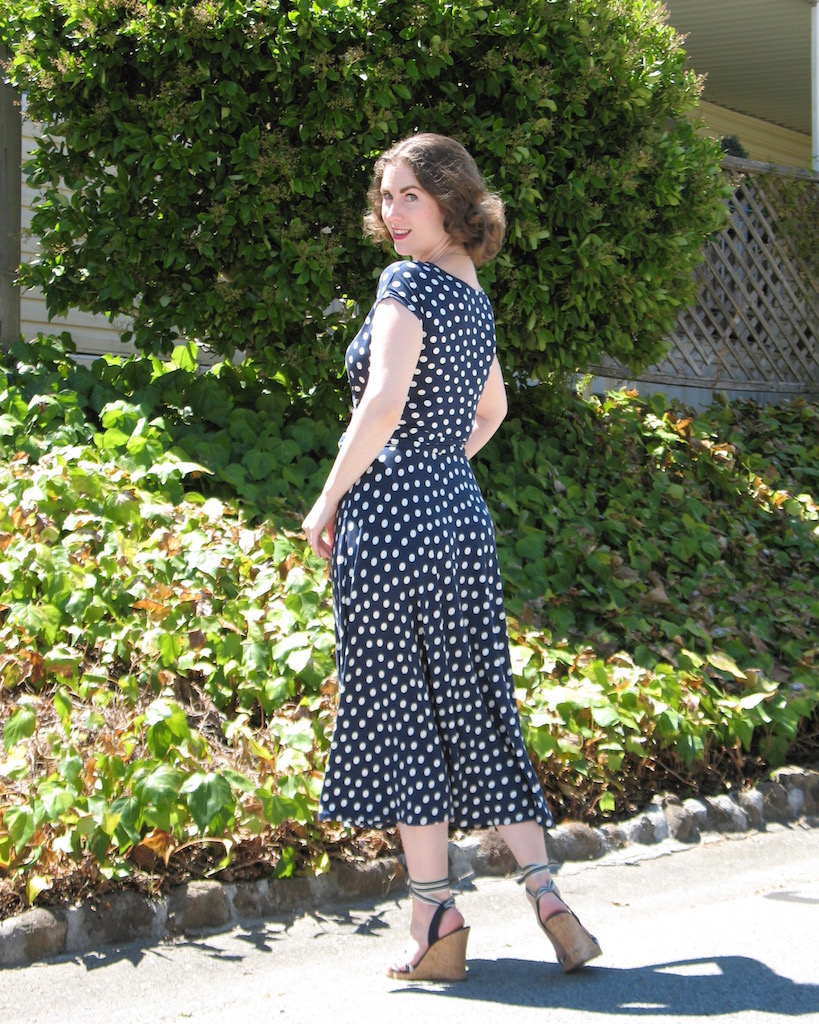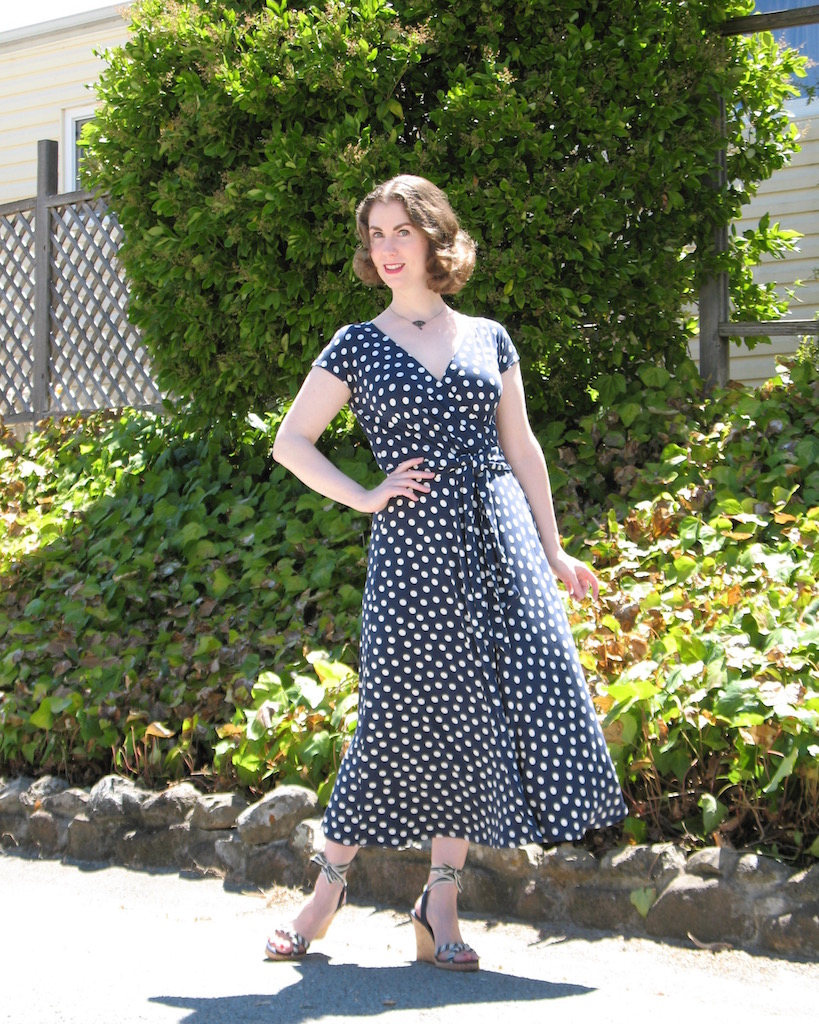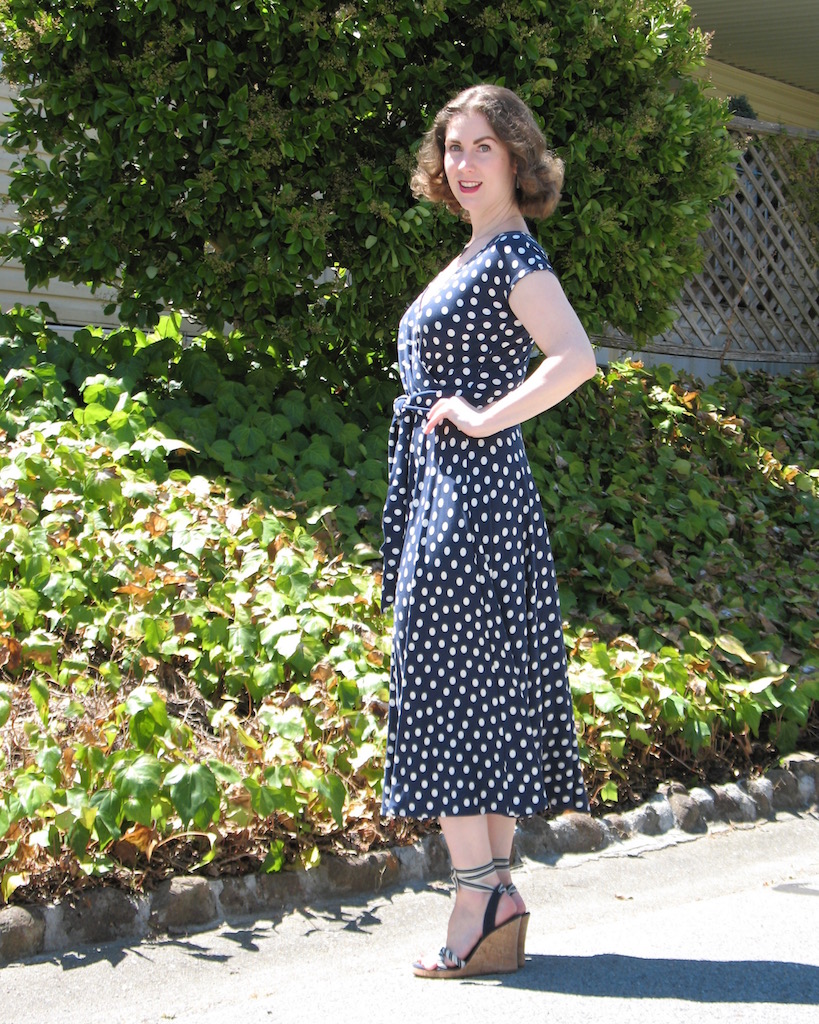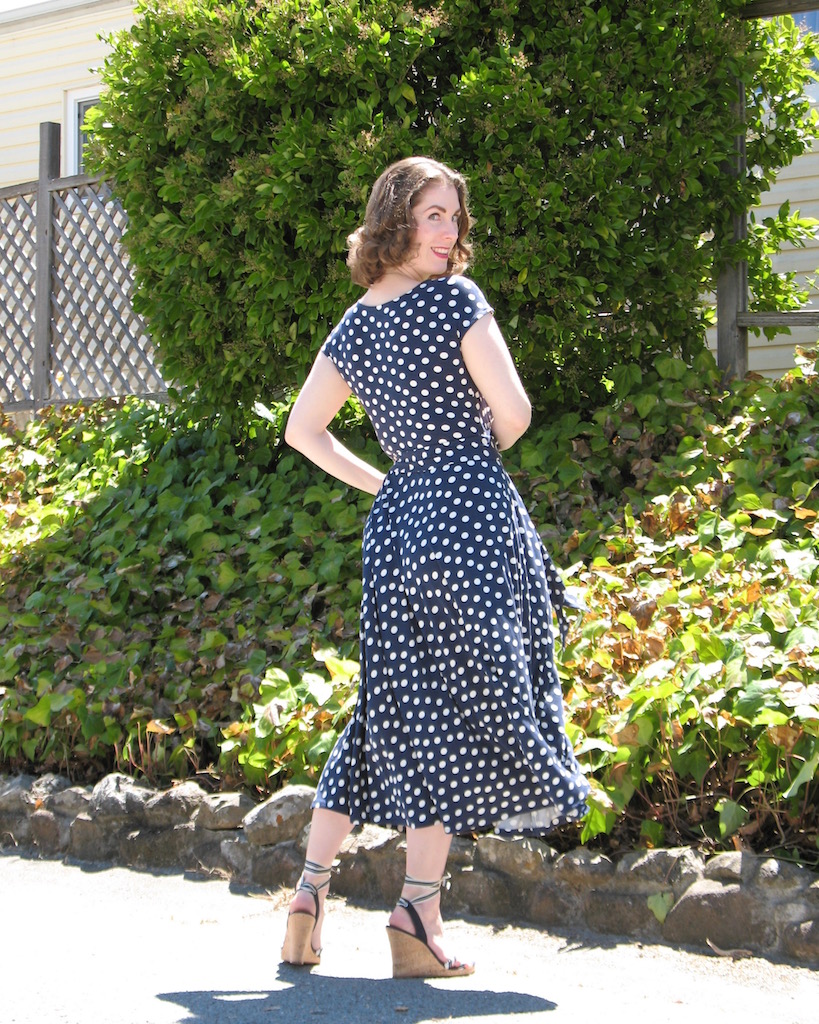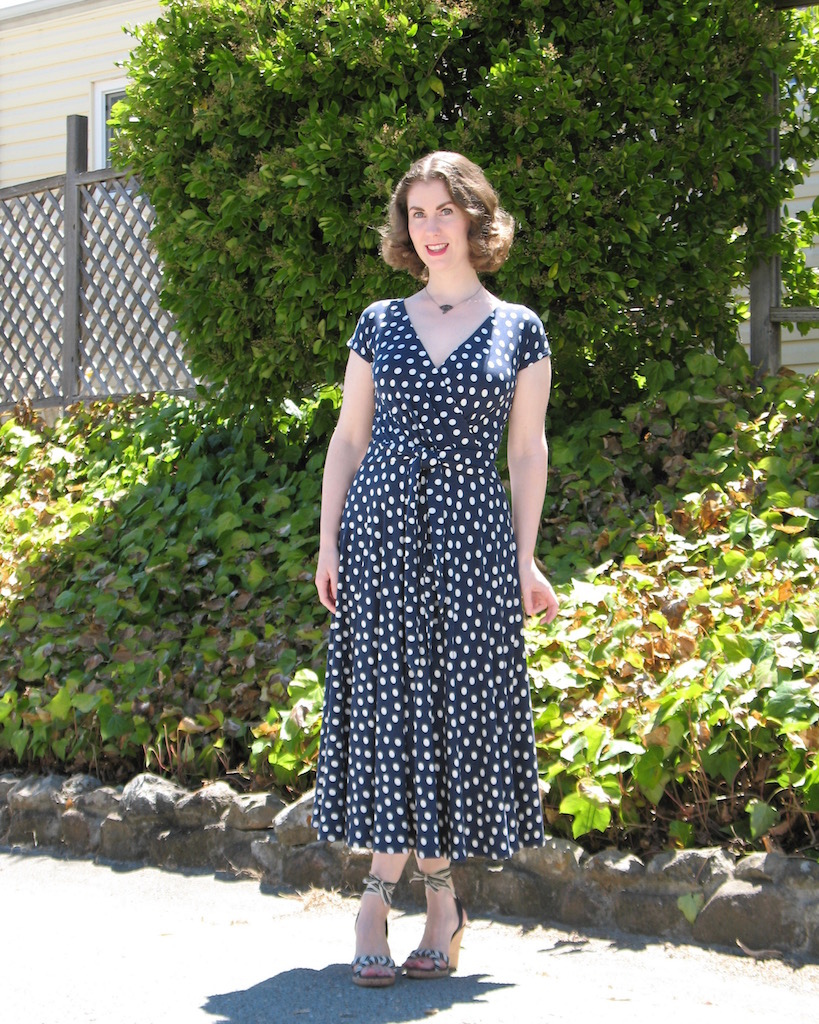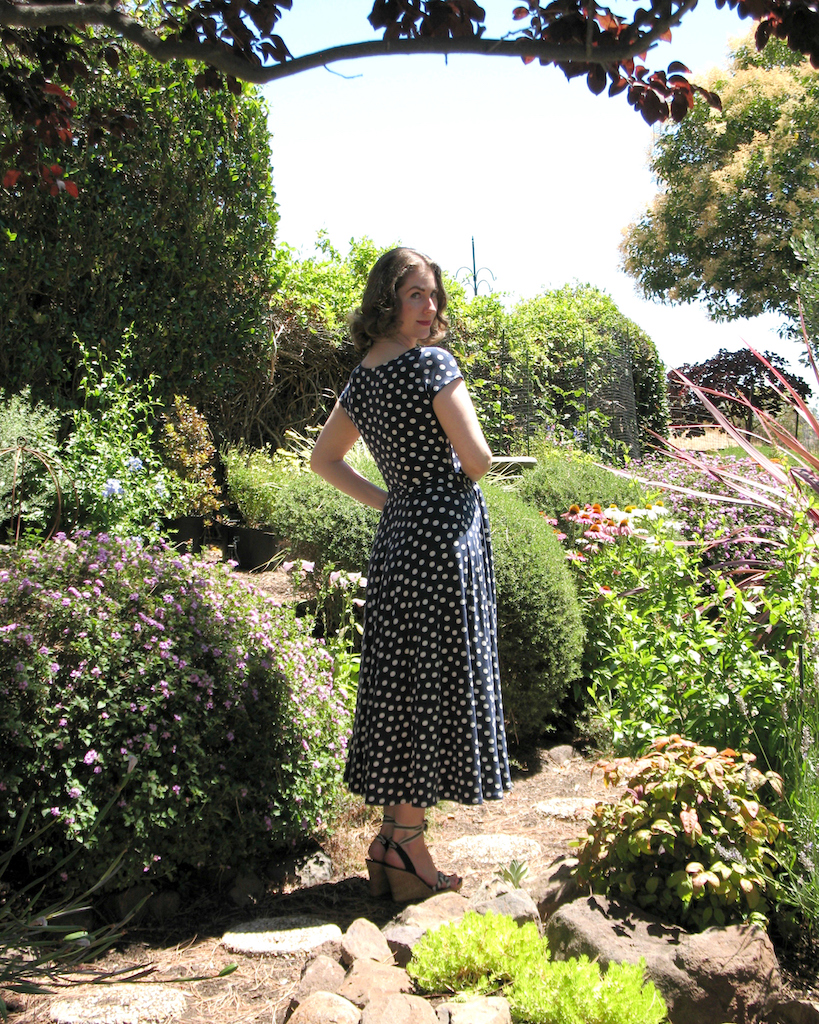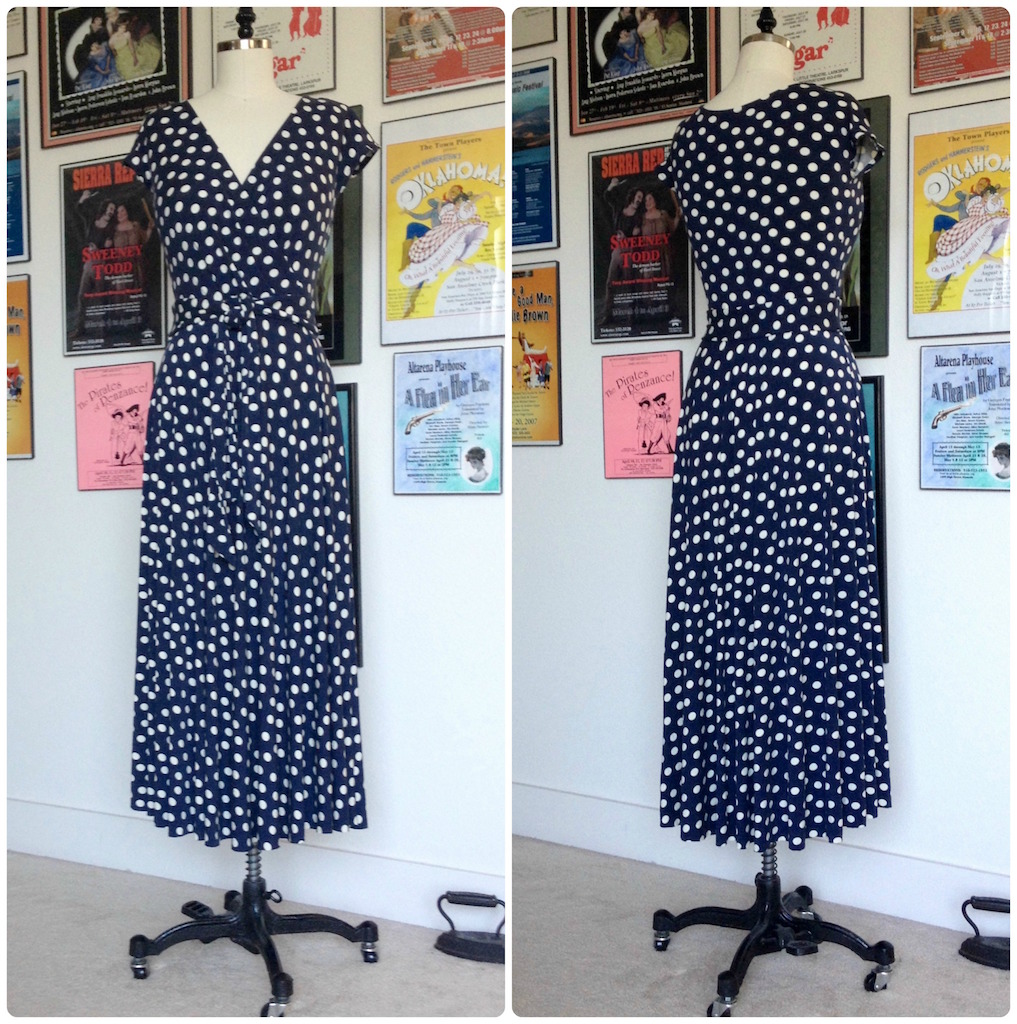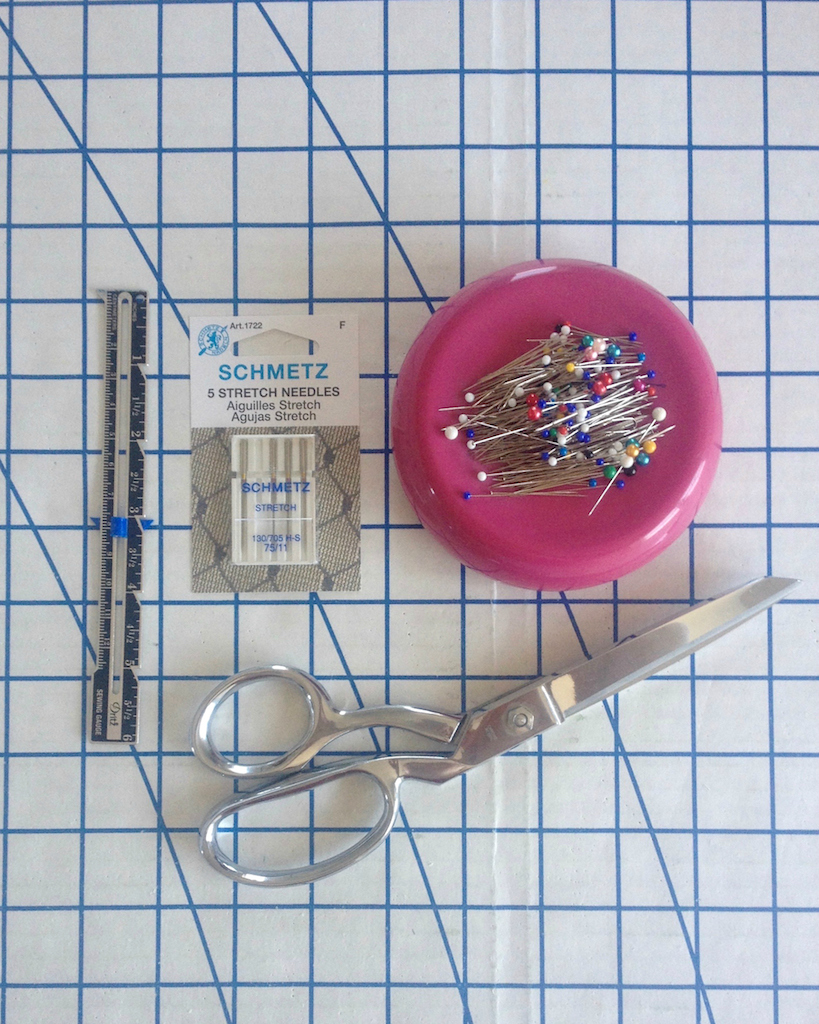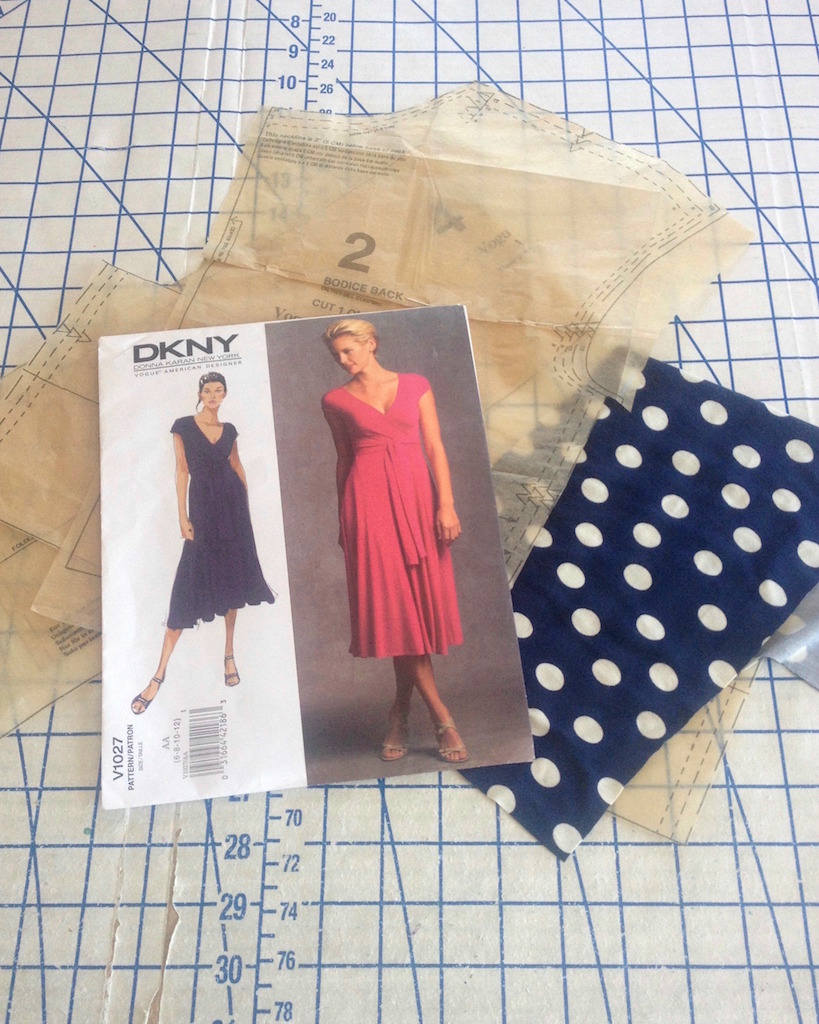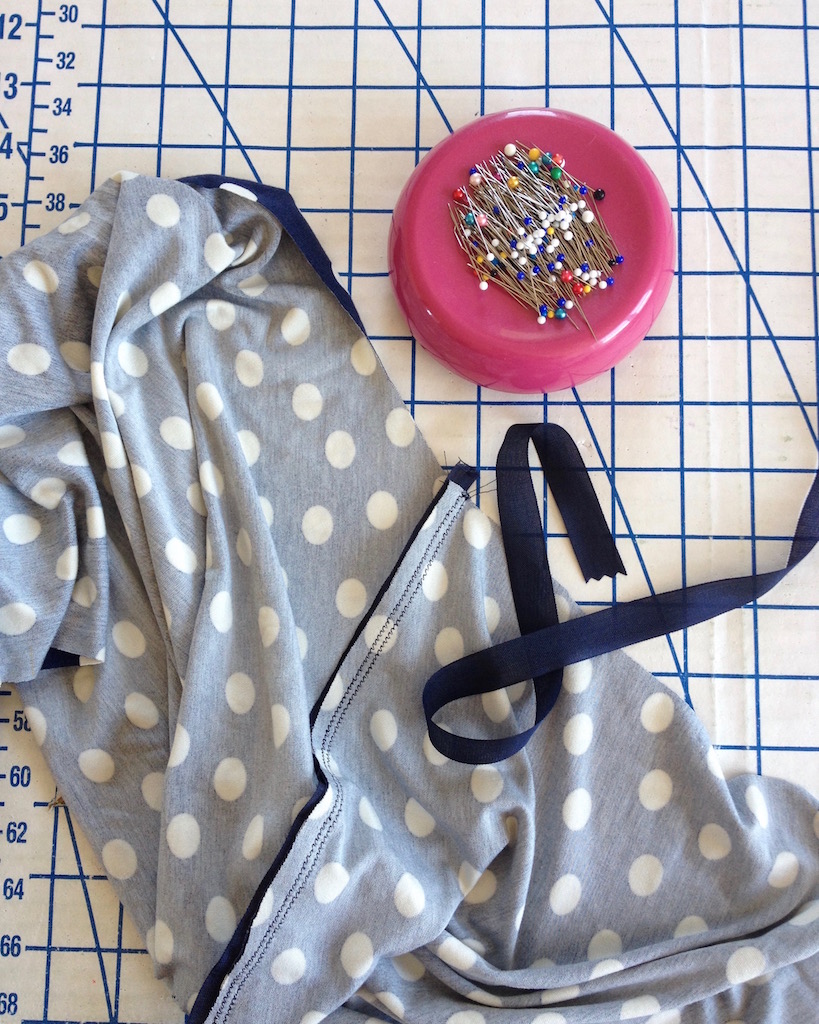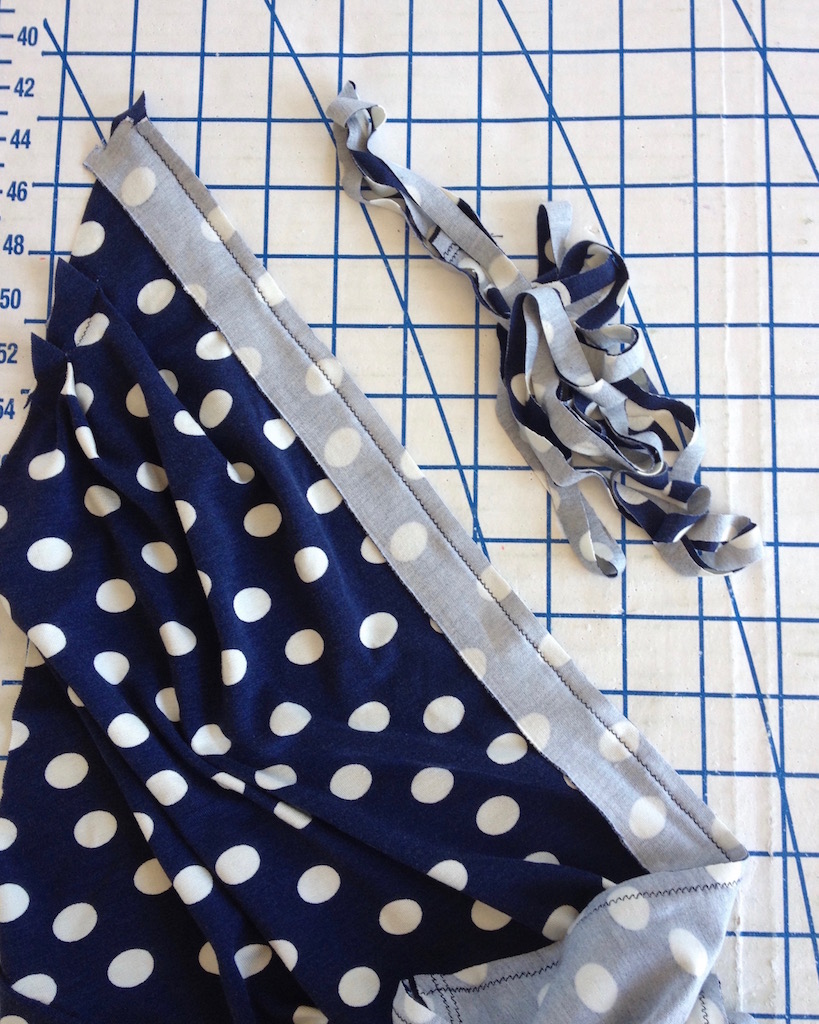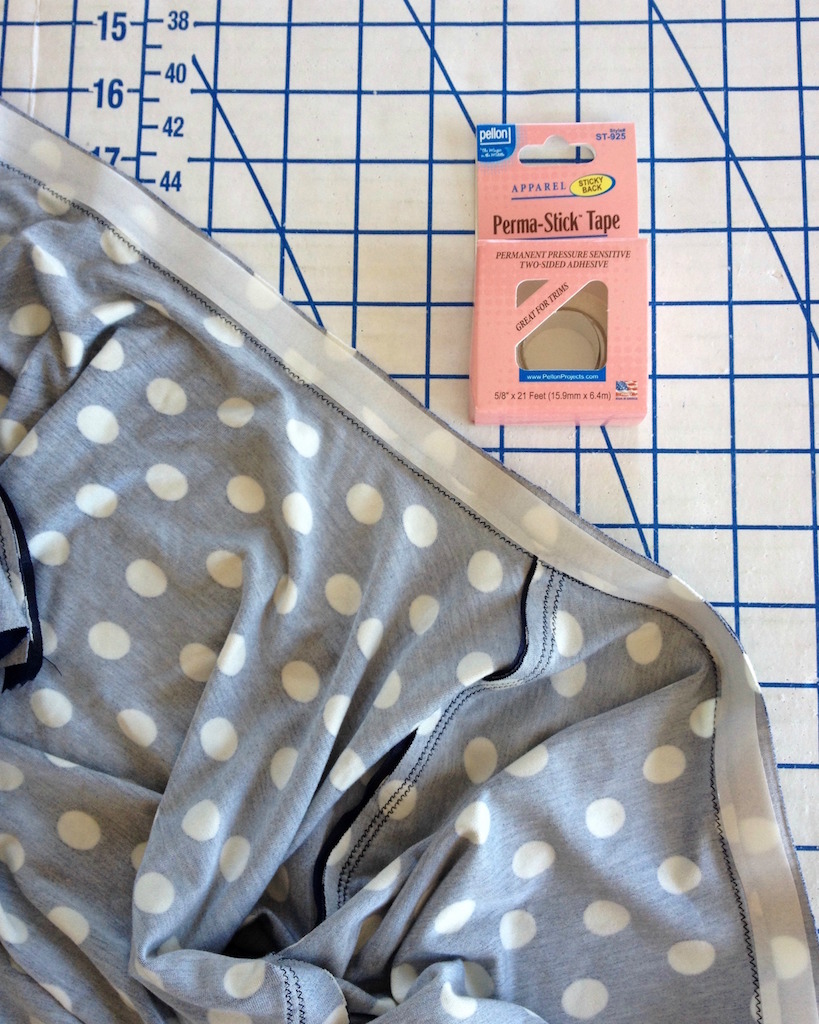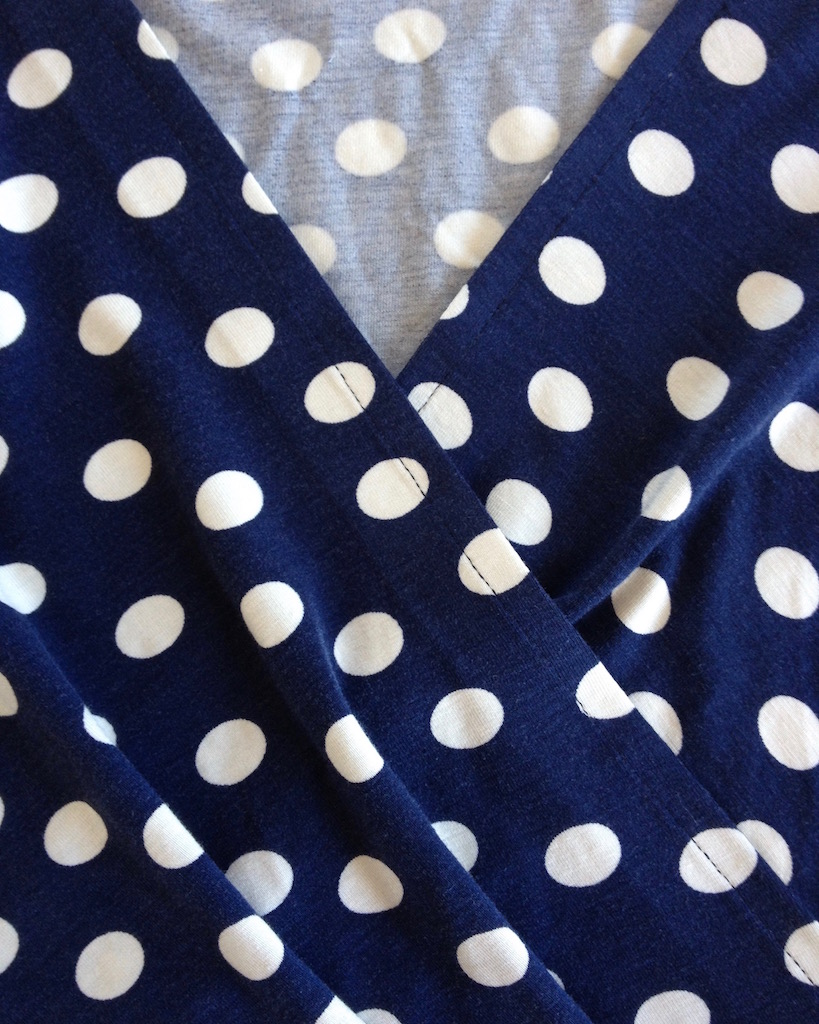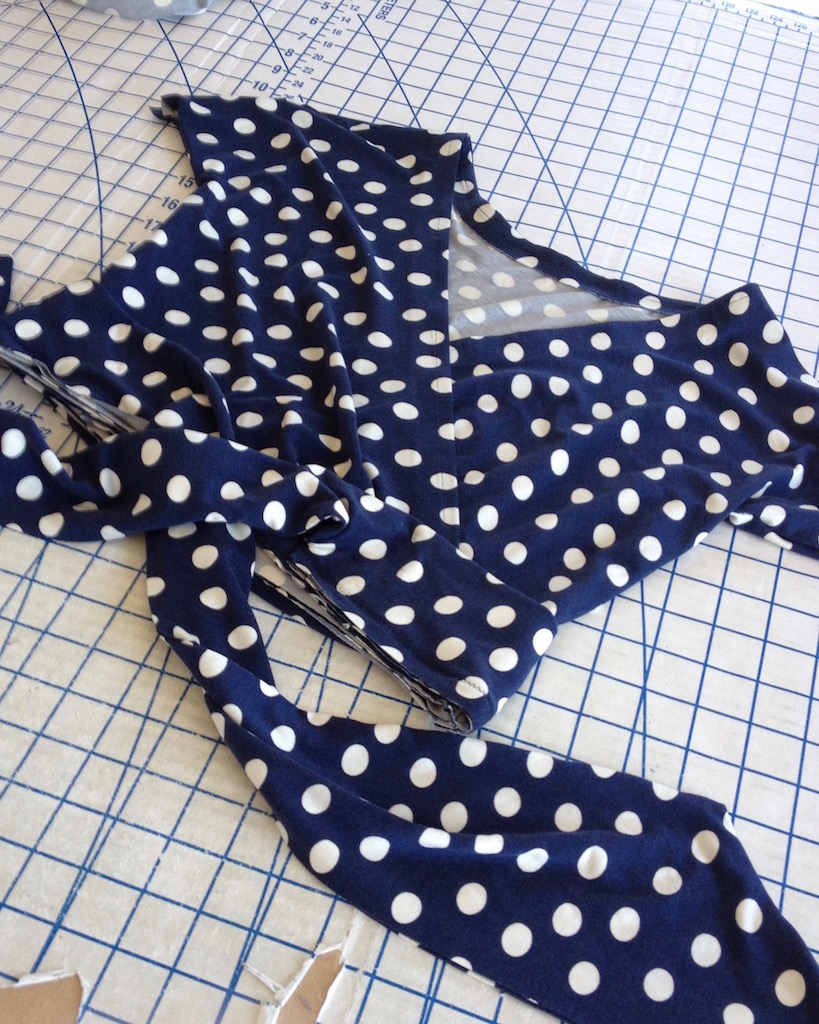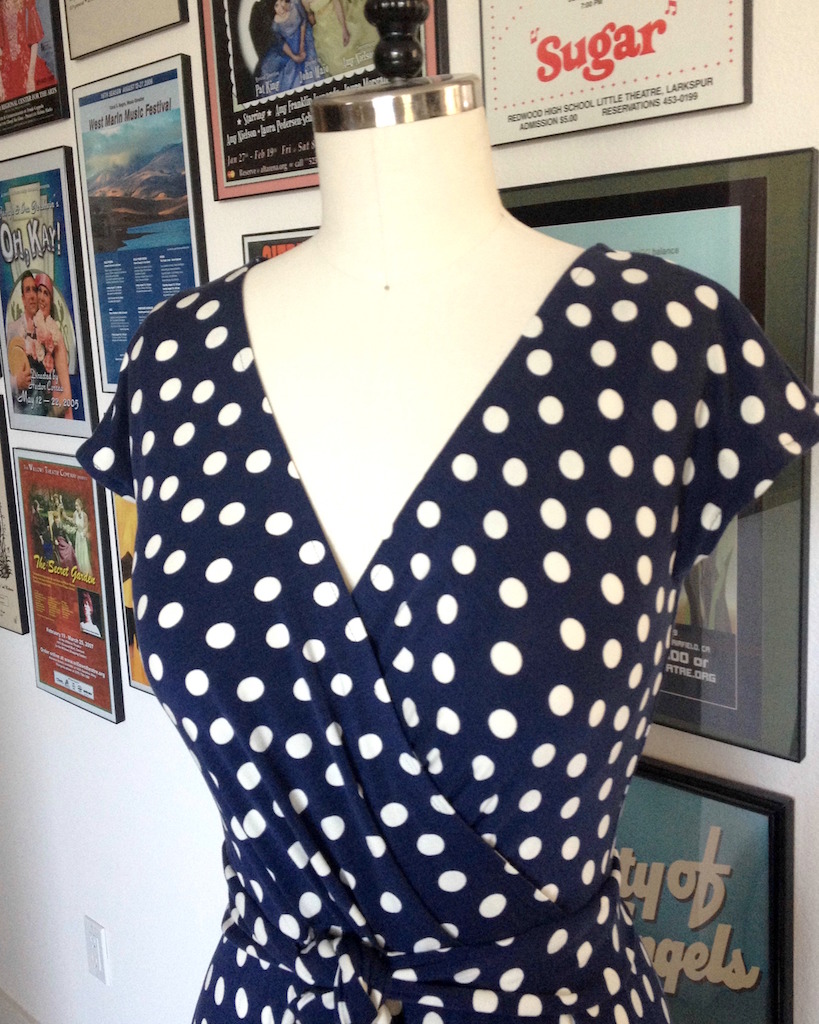I have taken baby steps in the last few years to get over my fear of sewing with knit fabrics. My journey began by incorporating one of my favorite parts of the sewing process - hand sewing. I have made a few Alabama Chanin style garments and have come to enjoy hand appliqué using 100% cotton jersey. But knit fabric has never come in contact with my sewing machine.
Until today . . .
I purchased this rayon knit last year from Craftsy. What can I say, I was seduced by the polka dots and the sale price. The fabric is very sproingy - which is probably not an actual word, but, in my opinion, describes this textile quite nicely. Cutting the large skirt pieces out was not very fun. The fabric width is too much for my table, and it was a bit of a wrestling match trying to get the fabric laid out nice and flat without a portion of it slinking over the edge which would then take the rest of the yardage with it. Cutting into the stuff also felt very odd. But I stuck with it, and while it is not the most beautiful or accurate job I have ever done, it worked out in the end.
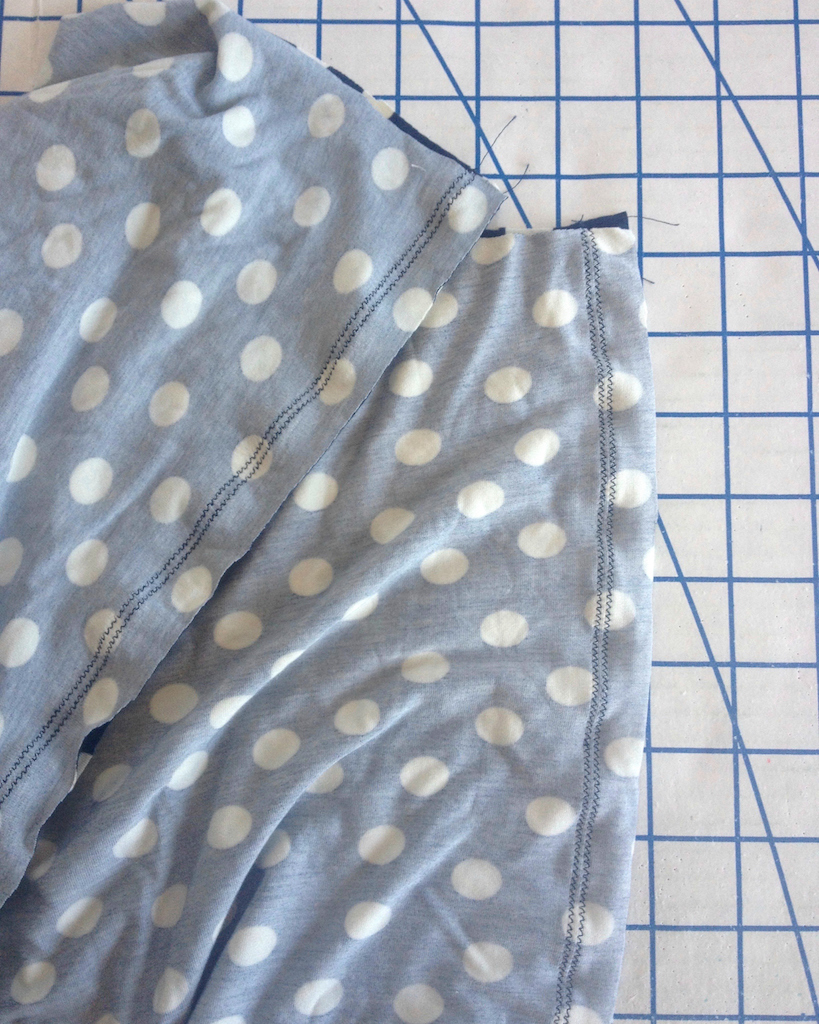
Turns out my Bernina 330 has what I believe is referred to as a lightening stitch. That sounded a bit more fancy than a regular old zig-zag stitch, so I tried it out on a few scraps of material, and the results (while not perfect) were successful. The lack of a walking foot means the seams are slightly stretched, but a little bit of steam from the iron improves the stitching line. After searching online for a solution, I was disappointed to find that my machine does not allow for any adjustment of the foot pressure or feed dogs (at least, as far as I can tell). I guess Bernina really wants me to buy that expensive walking foot!
And guess what? The pattern indicates a use for seam binding - which is so much nicer than that plastic elastic stuff that is stitched into the shoulder seams of some of my purchased knit dresses and sweaters. (Now I was starting to feel at home!)
I know that some people use a stabilizer for hemming and/or finishing knits. I have some Pellon sticky tape, so I tried that on the neckline. I know this is not the right notion to use, but it did make the topstitching look much nicer than without.
I ignored the instructions for the neckline finishing. I cut my own strip of fabric and stitched it, right sides together, applied the tape, turned it under and top-stitched it in place. Because the neckline does not need to stretch, I used a straight stitch; this method worked quite well. For the sleeve hem, I used a strip of fabric, but without the help of the stabilizer since I wanted that seam to stretch as needed.
I am also wondering if it is really necessary to use a stretch stitch on the vertical seams of a full skirt? I see the need on a horizontal waist seam that requires flexibility to get over shoulders or hips, but does a lightening stitch really make a difference on a half circle skirt seam? Vogue's instructions do not indicate a difference between the bodice seams and the skirt seams . . . but they also suggest using a straight stitch and stretching the fabric as it is fed through the sewing machine which sounds like a bad idea to me, so I am not sure I trust them.
The dress is currently hanging on my dress form so the skirt hem can settle. I am thankful that the instructions noted this - I assumed with all that bounce, the fabric would not drop. But it sure did. Now I have to even everything out before hemming the garment (bleh . . .).
I would love to hear any suggestions on how deal with a curved hemline on knit fabric! A straight stay tape is not going to work, so do I just do my best not to stretch the fabric while it runs through the machine?
And if I am doing anything that looks wrong to all of you knit fabric masters out there, I would love to hear about it before I pick up any bad habits!






